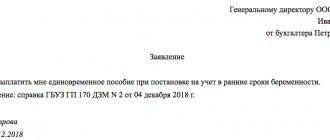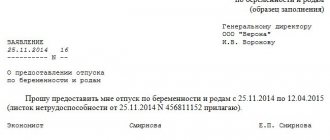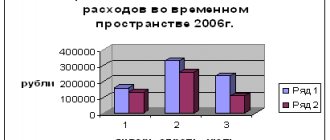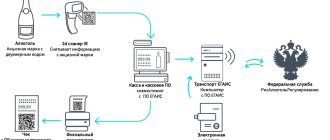Tell me, what does “I’ll take the goods for sale” mean?
Many suppliers do even more for product distributors and allow them to pay in installments. The sales pact under discussion involves the release of funds upon sale. On the day of shipment, the supplier provides the buyer with a contract, delivery notes, invoices and other accompanying documents. A sample of the paper in question can be downloaded for free via a direct link.
Many counterparties enter into sales transactions upon the sale of goods. Payment is made in cash and by bank transfer. Such legal relationships are long-term. In this agreement between the two parties, there are many positive properties and almost no negative aspects. It is easier for a manufacturer or supplier to come to an agreement with counterparties, sellers of goods, rather than selling their own products to the end consumer. It is easier for consumers to buy any product nearby than to look for a wholesaler. Therefore, numerous entities benefit from this type of legal relationship.
Mandatory clauses of a contract for the sale of goods with payment upon sale
:
- Name, date, place of agreement, identification information;
- Subject, characteristics, rights, duties, responsibilities;
- Timing of implementation or sale, cost, payment procedure;
- Additions, comments, appendices;
- Final points;
- Signatures, transcript.
A pay-as-you-sell sales contract is easy to write. Almost any user of the Word editor can handle its execution. The pact is drawn up in at least two copies and signed by authorized representatives. If the trade has any special features, the parties may agree not to enter into such transactions in a certain territory. Typically, each cash-on-delivery arrangement is unique. Civil law allows subjects to include in documents all rules of conduct that are not prohibited by law.
Date: 2016-08-31
Supply contract for sale - sample
The contract for the supply of goods for sale - sample, based on the norms of current legislation, must comply with the following rules:
1. The preamble of a contract must traditionally include information identifying the parties to the contract:
- names of organizations;
- requisites;
- Full name, positions of the employees on whose behalf the transaction was concluded
- a list of title documentation confirming the powers of these persons.
2. The section on the subject of the agreement determines the essence of the concluded transaction. In addition, in relation to the supply agreement, in this or a separate section it is necessary to define specific product criteria and assortment, information about quality and packaging, delivery times and procedures.
3. As a rule, the agreement in question contains a section on the rights and obligations of the parties to the transaction. In this case, rights and obligations can be spelled out both in as much detail as possible, or quite briefly, limited to the supplier’s obligation to deliver and the buyer’s to pay for the goods.
4. The contract must contain a mandatory section defining the cost of the product and the payment procedure. As mentioned above, this section must include a specific calendar date for the final settlement of the transaction.
5. In addition to the listed conditions, the parties can agree on the duration of the contract, the procedure for resolving disputes, and the terms of force majeure.
6. The document is completed with the details and signatures of the parties.
A sample agreement can be downloaded on our website.
Transfer of goods for sale
⇐ Previous1234
We hand over our goods for sale. You must first enter information about commission agents in the Counterparties directory. For such counterparties, check the Buyers box and draw up an agreement with the type of agreement “ With commission agent”
". The shipment of goods is processed in the same way as the sale of goods.
The fact of sale of our goods by a commission agent is documented in the document “Report of the commission agent on goods sold” (menu Documents – Sale). The document can be drawn up on the basis of the Sales of goods and services document.
- In the “Counterparty Documents” journal, select the required document Sales of goods and services.
- Menu Action - Based on - Commission agent's sales report. The document is filled out on the basis of the sales document; be sure to fill out the window for the method of settlement with the commission agent. If not all the goods are sold by the commission agent, then in the quantity column we put the quantity of goods sold and OK.
- Registration of payment from the commission agent. Based on the commission agent's report on sales, we draw up a document for receipt of funds.
Basic Standard Management Reporting
Statement of goods sold for sale
The report is intended to analyze the movement of goods sold for sale by quantity and amount. The “Receipt” column shows the quantity and amount of goods transferred minus the return. The “Expense” column shows the quantity and amount of goods sold. The columns “Starting balance” and “Final balance” show the quantity and amount of unsold goods as of the start and end dates of the report.
Report lines can be grouped by counterparty, agreement, transaction and item. However, grouping by store transactions does not make sense since there are no transactions currently taking place.
Report “Mutual settlements with commission agents”
The report is intended to account for item items transferred for sale to commission agents. This report also tracks the status of mutual settlements with commission agents. Thus, in one report you can get complete information about what goods were given to commission agents for sale, how many of them were sold, what commission was accrued, and how much the commission agent paid the company for the goods he sold.
If you set the “Only overdue” flag in the report settings, then the report will display information only about those commission agents who did not pay for the goods sold on time. Late payment is determined only by those documents that are drawn up under an agreement with the established type of mutual settlements “According to settlement documents.” Late payment is calculated in accordance with the “Number of days of debt” parameter.
Using the groupings presented in the report settings, you can detail the information in the report down to the level of documents that completed the business transaction:
- Movement document (registrar) – a document that has completed a business transaction.
The report can be grouped by item, contract and transaction. Quantity (in balance storage units) and amount (in management accounting currency) are used as report indicators.
By setting the selection parameters presented in the report, you can select information on a specific commission agent, a group of commission agents, an arbitrary list of commission agents, or on commission agents with certain properties and categories.
The table of the generated report contains the following columns:
- Debt/Balance at the beginning - the first column displays the commission agent's debt for goods sold that were unpaid by him as of the start date of the report, and the second column shows the quantity and amount of goods available to the commission agent as of the start date of the report.
- Transferred for sale – the quantity and amount of goods transferred for sale to the commission agent during the reporting period.
- Sold – the quantity and amount of goods sold by the commission agent during the reporting period.
- Paid – the amount of payment transferred by the commission agent to the company for the period of generation of the report for the goods sold by him.
- Remuneration amount – the amount of commission accrued to the commission agent for the period of report generation.
- Debt/Balance at the end - the first column displays the commission agent's debt for goods sold that were unpaid by him as of the end date of the report, and the second column shows the quantity and amount of goods available to the commission agent as of the end date of the report.
Report “Statement of customer orders”
The “Statement of Customer Orders” report shows complete information on the fulfillment of customer orders for a certain period in terms of shipment of goods. The report displays quantitative indicators: the quantity of ordered and shipped goods in basic units of measurement, in units of storage of balances and in units for reporting, as well as total indicators: the amount in the currency of management accounting and the amount in the currency of mutual settlements under the agreement under which the order was placed buyer.
The “Incoming” column shows the number of goods ordered by the buyer and their amount; the “Expense” column shows the number of goods shipped to customers and the amount. The columns “Starting balance” and “Final balance” show, respectively, the quantity of goods not shipped according to the order as of the start and end dates of the report.
The report can be grouped by managers responsible for order fulfillment. The manager is the user who is selected as the responsible person in the “Buyer’s Order” document.
To set grouping by manager, you need to add the “Buyer’s order” field to the list of groupings. Responsible".
The report can also be grouped by days, weeks, months, etc.
0
Share link:
- Click to share on Twitter (Opens in new window)
- Click here to share content on Facebook. (Opens in a new window)
Liked this:
Like
Similar
Author of the publication
offline 38 minutes
How to take goods for sale
To do this: select the document “Commission Agent's Sales Report” from the menu – Action – Based on and select Incoming cash order (if payment is in cash) or Incoming Payment order, and then bank statement (if payment is by bank transfer).
Product returns
To return a product from a supplier, you must:
- Menu Documents - Purchases - Receipt of goods and services, select the required receipt document.
- Menu Action – Based on – Return of goods to the supplier.
- A window will appear on the screen filled in based on the receipt document. If necessary, enter the quantity of the item being returned.
To process a product return from the buyer you must:
- Menu Documents – Sales – Sales of goods and services, select the desired sale.
- Menu Action – Based on – Return of goods from the buyer.
- A window will appear on the screen, filled in based on the implementation document. If necessary, enter the quantity of the item being returned.
Removal
Deleting objects (hereinafter, by objects we mean directory elements, groups, documents) occurs in 2 stages. At the first stage, the object is marked for deletion. To do this, you need to select the object and press the “Delete” key on the keyboard and confirm the request to mark it for deletion. The object will be marked for deletion and a deletion sign will appear on its icon – a blue cross.
To unmark for deletion, you must select an object marked for deletion, press the “Delete” button and confirm the request to unmark for deletion. The object will remain in the database until it is physically removed from the database. Only a user who has full rights can physically delete objects from the database. A window will appear on the screen, at the top of which all objects marked for deletion are listed. Click on the “ Control”
"and the program checks whether we can delete the marked objects.
Then click on the “ Delete
” button.
⇐ Previous1234
Date added: 2015-11-23; | Copyright infringement
Recommended content:
Related information:
Search on the site:
Accounting reflection of transactions for the purchase and sale of goods in retail when accounting for goods in purchase prices is carried out in the following sequence:
- receipt of products from the supplier, mutual settlements according to the agreement;
- displaying purchase prices in the accounting records of the enterprise, posting products to a retail warehouse or moving them from the main warehouse.
- sale of goods to a buyer purchasing it for personal use; mutual settlements with the customer, confirmation of payment;
- determining the financial results of the transaction, monitoring the results of the sale.
Retail trade refers to a type of trading activity that is associated with the purchase and subsequent sale of products to end consumers.
Note from the author! The main purpose of assets sold in retail trade is personal consumption. Sales of goods purchased for further resale are accounted for in wholesale trade.
In retail trade, the transaction is carried out on the basis of a purchase and sale agreement expressed orally. Payment is made in cash using cash registers in accordance with legislative changes in Federal Law 54-FZ of May 22, 2003, or by bank cards under an acquiring agreement if payment terminals are available in the store.
The accounting rules of a retail enterprise allow for the accounting of goods in both purchase and sales prices. The mechanism for accounting for goods in retail trade in purchase prices is identical to wholesale trade. The purchase of goods is displayed on the account. 41, an additional subaccount 41.2 is opened to account for retail goods.
Something to keep in mind! The procedure for accounting for products in the warehouse must be recorded in the company's accounting policy.
To summarize the results of entrepreneurial activity in retail trade, the financial result is determined, recorded in the company’s accounting records. 90. The basis document for monitoring is a retail sales report generated from cash register receipts at the end of a shift.
Basic transactions for retail trade when accounting for goods in purchase prices:
- Purchasing goods from a supplier
Operation Wiring Receipt of received products in the warehouse Dt41.2 Kt60 Accounting for input VAT Dt19.03 Kt60 Accounting for transportation and procurement costs Dt41 Kt60 – when transport costs are included in the purchase price Dt44 Kt60 – with separate accounting of transport costs Payment to the supplier for purchased products Dt60 Kt50.51 Transfer of previously purchased goods to the appropriate retail warehouse Dt41.2 Kt41.1 Note from the author! The method of accounting for transport costs is chosen by the company independently and must be reflected in the company’s accounting policies.
- Sales of goods to retail customers
Operation Wiring Transfer of products, write-off of costs Dt90.02 Kt41.2 Accounting for proceeds received from sales Dt62.R Kt90.01 (in addition to account 62, a subaccount 62.R is opened, recording retail revenue) Accounting for non-cash payments of acquiring transactions Dt57.03 Kt62R Receiving cash from customers Dt50 Kt62R Crediting income from acquiring transactions to the current account Dt51 Kt57.03 (Dt91.02 Kt57.03 – deduction of bank commission for payment processing). - Calculation of the financial result of the transaction
Dt90 Kt99 – profitDt99 Kt90 – loss
Implementation agreement
In times of crisis, it is not easy to achieve high sales volumes of consumer goods, selling them only on the terms of full advance payment or deferred payment with a fixed term. Large manufacturers and distributors are forced to give part of their goods to small dealers for sale, since they are interested in maximum market coverage.
When selling a product for sale, the buyer (seller) accepts the product with the condition of its further sale through its retail outlets. Payment for the cost of the goods is made only after its sale. Unsold goods may be returned to the seller provided that their presentation is intact. Most often, distributors are chains of retail stores.
The seller's risks in such a sale are significant. The main requirements for the seller are an impeccable business reputation and solvency. To regulate relations between the seller and the distributor, a sales agreement is concluded. The terms of the sales contract provide for the seller’s obligation to comply with the storage conditions of the goods, as well as the seller’s right to check the availability and safety of the goods from the seller. All the seller’s documents are attached to the contract so that in case of non-payment for the sold goods, the seller can recover its cost through the court.
When concluding a sales contract, the seller receives a special benefit. Such goods can be considered an investment in his business (interest-free trade credit), since he does not need to invest in their purchase. He only needs to keep proper records of goods accepted for sale, as well as monitor their safety, expiration dates and presentation.
The advantages for the seller when selling goods in this way are:
no need to open your own retail outlets; quick “getting rid of” goods and saving on warehouse costs; the cost of goods transferred for sale is more expensive than those sold with 100% prepayment; almost direct delivery of products to store shelves, which is especially important for perishable goods. Disadvantages for the seller when transferring goods for sale:
money for goods sold is received unevenly; it is necessary to constantly monitor the implementer; the product may not be sold and returned after a long period; The shelf life of the product may expire before it is sold; red tape and additional costs associated with litigation if the buyer does not pay for the goods sold. A sales agreement is quite effective if there is a long-term business relationship between the seller and the distributor. To switch to such a payment scheme for goods, partners usually undergo a integrity check for more than one year. This is exactly the case when an untarnished business reputation can bring good profits to its owner.
How to take goods for sale as an individual entrepreneur?
rubles (excluding VAT), transportation costs for delivery of goods amounted to 300 rubles. Accounting is carried out in purchase prices, transportation and procurement costs are included in the cost of production. The goods were put up for sale at 210 rubles per piece (100 pieces per batch). During the operating day, the store sold 30 units worth 6,300 rubles.
Accounting entries for the purchase of goods:
- Dt41.1 Kt60 – 15,000 rub. – the container has arrived at the main warehouse.
- Dt41.1 Kt60 – 300 rubles – delivery is included in the original price of the goods.
- Dt41.1 Kt41.2 – 10,000 rubles – part of the goods was moved for retail sale.
- Dt60 Kt51 – 15,300 rub. – full payment has been made to the supplier.
At the end of the working day, after closing the cash register shift, based on the retail sales report, the accountant of Sad LLC made the following accounting entries:
- Dt62R Kt90.01 – 6,300 rubles – display of the revenue received per day from the sale of containers.
- Dt90.02 Kt41 – 4,590 rubles – the cost of products sold is written off.
Note! Formation of the initial price = (batch cost + TKR) / number of pieces in the batch = (15,000 + 300) / 100 = 153 rubles per unit. - Dt50 Kt62R – 6,300 rubles – all goods were paid for in cash.
To calculate the financial result, an analysis of the account is carried out. 90 and determination of the balance on the debit or credit of the account:
| Balance beginning Dt | Balance beginning Kt |
| 4 590 | 6 300 |
| RPM 4,590 | RPM 6,300 |
| Balance | Balance 1 710 |
Since the store’s revenue exceeded the costs of purchasing containers, the limited liability company “Sad” made a profit from the sale of these products.
Display of financial result on account 99:
- Dt90 Kt99 – 1,710 rubles – profit.
Features when returning from customers
In retail trade, the buyer may return previously purchased products in the following cases:
- Failure to provide complete information about the properties of the product at the time of sale.
- Defect detected.
Something to keep in mind! Returns due to defects are possible even in the absence of a cash receipt or sales receipt. - Return of non-food quality goods that are not suitable for the buyer for one reason or another (providing a cash receipt is required).
In the accounting of the selling organization, settlements with customers for the return of products are recorded on account 76, data on previously received revenue and written-off costs are reversed.
Victor Stepanov, 2018-04-11








